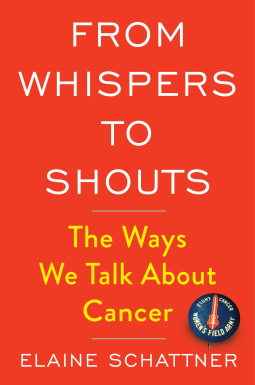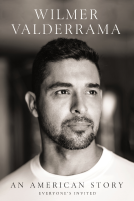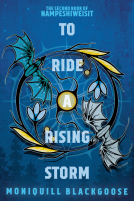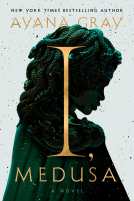
From Whispers to Shouts
The Ways We Talk About Cancer
by Elaine Schattner
This title was previously available on NetGalley and is now archived.
Send NetGalley books directly to your Kindle or Kindle app
1
To read on a Kindle or Kindle app, please add kindle@netgalley.com as an approved email address to receive files in your Amazon account. Click here for step-by-step instructions.
2
Also find your Kindle email address within your Amazon account, and enter it here.
Pub Date Mar 07 2023 | Archive Date May 17 2023
Talking about this book? Use #FromWhisperstoShouts #NetGalley. More hashtag tips!
Description
From Whispers to Shouts examines public perception of cancer through stories in newspapers and magazines, social media, and popular culture. It probes the evolving relationship between journalists and medical specialists and illuminates the role of women and charities that distributed medical information. Schattner traces the origins of patient advocacy and activism from the 1920s onward, highlighting how, while doctors have lost control of messages about cancer, survivors have gained visibility and voice.
The book’s final section lays out provocative questions facing the cancer community today—including distrust of oncologists, concerns over financial burdens, and disparities in cancer treatments and care. Schattner considers how patients and their loved ones struggle to make decisions amid conflicting information and opinions. She explores the ramifications of so much openness, good and bad, and asks: Has awareness backfired? Instead, Schattner contends, we need greater understanding of cancer’s treatability.
Advance Praise
"In her innovative and insightful book, physician and cancer survivor Elaine Schattner explores the ways that we tell the story of cancer—and the ways we often fail to tell the real story of this notably complex and treacherous disease. The result is fascinating, enlightening, and, despite its difficult topic, even inspiring."
--Deborah Blum, Pulitzer Prize-winning science writer and director of the Knight Science Journalism program, Massachusetts Institute of Technology
"In From Whispers to Shouts, oncologist and cancer survivor Elaine Schattner writes a comprehensive and enlightening cultural and political history of cancer care in America while giving us a clear-eyed perspective of the future. I highly recommend it to anyone interested in learning more about cancer, which should be all of us."
--Sandeep Jauhar, New York Times best-selling author of Heart: A History
"From Whispers to Shouts is the first history of cancer to focus primarily on public perceptions of cancer. It is also a cri de coeur for a more upbeat assessment of past and future efforts to control the disease from an author who—as a doctor, patient, journalist and activist—is uniquely positioned to tell this story."
--Barron Lerner, author of The Breast Cancer Wars: Hope, Fear, and the Pursuit of a Cure in Twentieth Century America
Available Editions
| EDITION | Other Format |
| ISBN | 9780231192262 |
| PRICE | $29.95 (USD) |
| PAGES | 376 |
Available on NetGalley
Average rating from 3 members
Featured Reviews
“From Whispers to Shouts: The Ways We Talk About Cancer”, written by Elaine Schattner and published by Columbia University Press is due to be released in February 2023. Cancer is a word that has signified dread to those diagnosed with it, their friends and loved ones, from the time it was first openly talked about towards the end of the nineteenth century and still retains its power to strike fear into the hearts of many today. According to a World Heath Authority report dated February 2022, the disease remains a primary cause of death around the world, “accounting for nearly 10 million deaths in 2020, or nearly one in six deaths”. Its ubiquitous nature means there are few people on this planet who haven’t been touched by it, directly or indirectly. I have lost a mother, father and brother to cancer and am far from alone in suffering not just the grief of bereavement but the despairing helplessness of witnessing a loved one’s pain, distress and inexorable decline. I, like the rest of the world, yearn for the day when a cure will be available. This is a book we all need to read, not to comfort ourselves with misguided optimism, but to gain an enlightened and realistic understanding of cancer and how our perceptions of it influence its management now and into the future.
As the book’s author, Elaine Schattner is impeccably qualified on many levels. A journalist who has contributed articles to high profile publications such as The Atlantic, NPR, New York Observer, Scientific American and The Washington Post, she is a graduate of Yale College and the New York University School of Medicine, an Associate Professor of Medicine at Weill Medical College, a fellow of the American College of Physicians, a member of the American Society of Clinical Oncology and a Distinguished Member Emeritus of the American Society of Hematology. She is also a former practicing oncologist and immunological researcher and was herself diagnosed with breast cancer some years ago.
Her book makes an invaluable contribution to our understanding of cancer and it should be read by anyone (medical professional or layperson) who wants to understand more about something that impacts the lives of so many. It’s not an exaggeration to say this is a groundbreaking work. While cancer has had copious exposure in books, magazines, newspapers, journals, movies, television and in recent years social media, this is the first book to examine public perceptions in depth, to assess how they’ve changed over the decades and consider their implications for the future.
The first half of the book documents the cultural and political history of the disease in a wide-ranging and meticulously researched account that presents an abundance of facts and information, obviously the result of meticulous and intensive research. While it may be tempting to skim over parts of this section, and it is dense, we would be wise to remember what Norman Cousins said – “History is a vast early warning system”.
One attitude that Schnatter highlights and I found interesting is our tendency to portray the cancer experience in militaristic or fighting terms, what she terms the “tumoricidal mindset”, where cancer victims are seen as engaged in a battle to the death against a malignant foe. This notion gained traction early. Sword imagery was first adopted as far back as 1928 and later became widely used as a symbol in cancer crusades. It’s still evident today in death notices for example, where someone is described as having succumbed after a long battle with cancer. The bellicose trope, Schattner notes, became popular because it encouraged activism, not only among advocates but also patients, who were used to taking a passive role when it came to medical treatment and advice. She likens it to the stance adopted by anti-AIDS activists in later years, where obvious parallels exist especially in terms of public perceptions, as they do also with the Covid pandemic. In managing public health crises of any kind, Schattner observes, “balancing hype, skepticism, and legitimate optimism would challenge physicians, journalists and patients for years to come”.
Social media has provided a new platform for the public to engage with the debate. Advocates, fundraising organisations, journalists and patients alike have been able to mount public conversations that, in their frankness and willingness to discuss personal experiences, would have been unheard of in the past. Cancer conversations, these days, Schattner remarks, “turned from awkward to no big deal”. Physicians, researchers and professional bodies also use social media to promote their agendas. This new openness however has created its own problems. Contradictory information is rife, the hype and over-exposure may well be counter-productive, especially when our knee-jerk reaction in regard to a medical diagnosis is to turn to “Dr Google”. Another, little discussed problem, Schattner notes, is that in the current climate of open access to a multitude of sources and authorities, the onus of responsibility is now shifting from the doctor to the patient. Decision making about therapies, trial medicines and experimental treatments, while reflective of the new democratisation of medicine, is complicated by the often questionable nature of the information on which it’s based. Patient empowerment is a good thing, provided the patient is well informed.
While advances in treatment mean that cancer is no longer the death sentence it once was and doctors are becoming more receptive to patient participation in treatment choices, Schattner warns that it’s too soon to be complacent. “Public understanding of cancer is at a critical juncture”, she says. Survival rates well beyond initial prognosis are becoming common. But old attitudes of shame, fear, ignorance and prejudice still persist. What Schattner calls “a perception gap” between the informed (medical professionals, scientists and educated patients) and the under or ill-informed continues to compromise attitudes towards cancer. It also encourages the circulation of myths and misleading messages. Beliefs that cancer is hereditary, contagious, incurable, shameful or a sign of divine retribution stem from the early 1920’s and still prevail, especially among the disadvantaged and underprivileged.
Prevention is better than cure of course, perhaps more so in the case of cancer than with any other condition. In her concluding chapter Schattner addresses the crucial question of whether cancer can indeed be prevented. Old notions that it was incurable are being challenged and refuted daily. Measures such as cancer screening have been in place for many years, although surprisingly they aren’t considered a priority by oncologists. Contention still obscures debate over the cause of malignancies which makes it difficult to prescribe definitive methods of prevention. However, in line with advances in treatment, the science of prevention is also progressing. The economic argument for prevention is compelling and one that should weigh heavily in policy making at all levels. Prevention is far less costly than late-stage oncology care and early detection enhances the treatability of almost all kinds of cancer. Interestingly, debates about early detection were spurred as far back as 1885 when General Ulysses S. Grant (who died from cancer) penned his book “The Personal Memoirs of U.S. Grant” which sold over 300,000 copies and highlighted the urgency of trying to prevent the disease. And yet the early detection message still goes unheeded by many. Again, as Schattner’s book makes abundantly clear, fear, misinformation and ignorance continue to hamper our best efforts to control cancer.
Interestingly, while I was reading this book, the SBS television program “Insight”, aired a discussion forum called “Outliving Your Prognosis” in which cancer patients talked about “beating the odds” and doctors reported on how they felt about delivering a cancer diagnosis. Personal testimonies reinforced the messages in Schattner’s book, in particular that new medical technologies and treatments have significantly boosted survival rates for many forms of cancer in the past three decades.
As a very fair-skinned South Australian (the hottest and driest Australian State) I’m very susceptible to skin cancer. Sun exposure over many years has left my skin mapped in scars, wrinkles, blotches and other crusty outcroppings (fortunately none of them malignant so far). Ignorance may be bliss but the youthful idiocy of lying like an oily peeled banana for hours in the sun to get a tan that I eventually figured would only come out of a bottle, has exacted a heavy price. Far too many carved out and sliced off bits of me have been left behind in doctors’ surgeries. Add to that my family history, a cancer diagnosis at some stage in the future is not improbable and the thought is not a happy one. But the best way to counteract fear is to keep informed and in that regard Schattner’s book is an important addition to the literature. Her final statement is one we should take to heart and take heart from.
“As cancer becomes known in its myriad forms and grows increasingly treatable, the metaphor fails. The Dread Disease, the Emperor of All Maladies, has been transformed into a spectrum of diseases, sometimes but not always fatal. As new therapies emerge … cancer will no longer be so feared.”
Thank you to Columbia University Press for providing me with an advance copy of the book.
Readers who liked this book also liked:
L.M Montgomery
Children's Fiction, Comics, Graphic Novels, Manga, Teens & YA
We Are Bookish
General Fiction (Adult), Romance, Women's Fiction
We Are Bookish
Multicultural Interest, OwnVoices, Teens & YA
We Are Bookish
Arts & Photography, Health, Mind & Body, OwnVoices


















